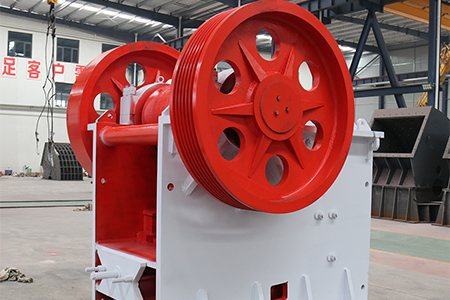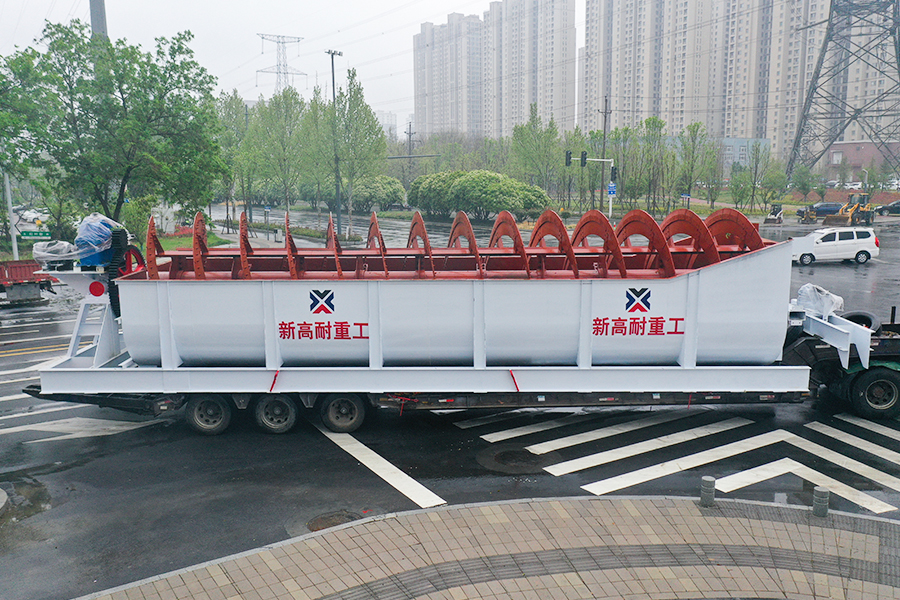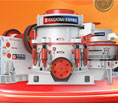Characteristics and uses of dolomite
 Xingaonai
Xingaonai
![[list:date style=M.d,Y]](/images/date.png) Mar.16,2025
Mar.16,2025
 22
22
If you want to know more details about equipment, solutions, etc, please click the button below for free consultation, or leave your requirements!
Introduction to Dolomite
Dolomite is a carbonate mineral composed of magnesium carbonate and calcium carbonate. It is usually off-white or off-white, sometimes with different shades of gray or pink, and has a fine granular appearance. Dolomite is mainly formed by sedimentation, metasomatism, hydrothermal action and metamorphism. Its formation requires specific geological conditions, including a magnesium-rich environment, suitable temperature and pressure, and sufficient time. Dolomite is widely distributed in sedimentary rocks and metamorphic rocks, and is one of the important minerals in geological and industrial research.
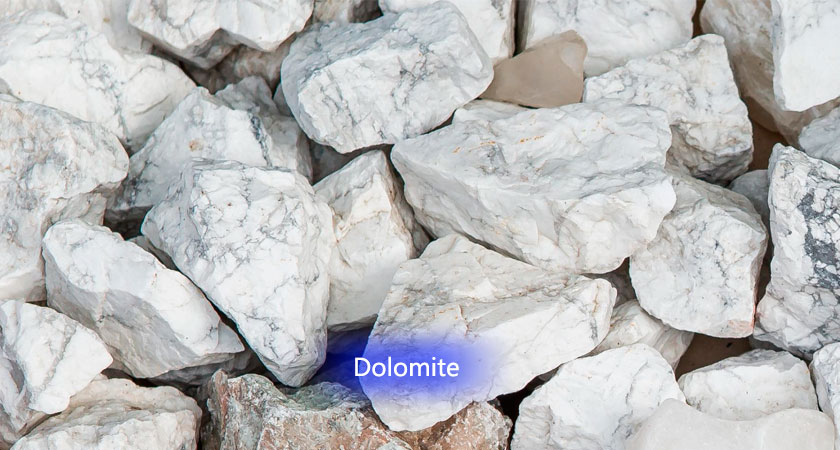
Characteristics of Dolomite
Physical properties: Dolomite is usually white or gray, and sometimes other colors such as light yellow or pink appear. It has a transparent to translucent glass luster, is slightly harder than calcite, and is a medium-gravity mineral. It belongs to the trigonal system, usually rhombohedral or columnar, and has a shell-like or uneven fracture.
Chemical properties: The chemical formula of dolomite is CaMg(CO₃)₂, which is mainly composed of calcium, magnesium and carbonate. It is slightly soluble in water, but dissolves quickly in an acidic environment. It reacts with cold dilute hydrochloric acid to release carbon dioxide.
Other characteristics: Dolomite decomposes at high temperatures to produce magnesium oxide and calcium oxide, and releases carbon dioxide. It is also refractory and is one of the important raw materials for making refractory bricks. Dolomite has a birefringence phenomenon and may fluoresce under ultraviolet light. In addition, it is not conductive and magnetic.
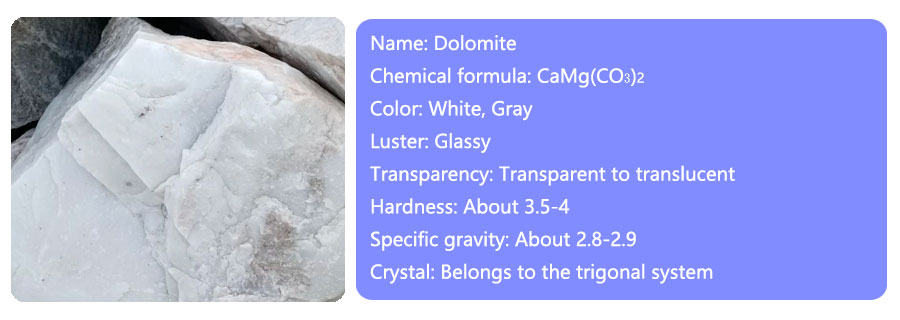
Uses of dolomite
Building materials: Dolomite is an important raw material for producing cement. The proper addition of dolomite can effectively improve the strength and durability of cement.
Glass manufacturing: The magnesium oxide in dolomite can improve the chemical stability and heat resistance of glass and reduce the thermal expansion coefficient of glass. In addition, dolomite can also adjust the color and transparency of glass.
Ceramic industry: Dolomite is also one of the main components of ceramic blanks. The proper addition of dolomite powder can effectively improve the strength and hardness of ceramics.
Metallurgical industry: In the process of steelmaking and ironmaking, dolomite powder can be used as a flux to react with impurities in molten steel to form slag, thereby improving the quality of steel.
Agricultural field: Dolomite can be used to make soil conditioners to adjust the pH of the soil and improve the fertility and water retention of the soil. In addition, it can also be used as a feed additive to provide nutrients such as calcium and magnesium for animals and promote their growth and development.
Environmental protection field: Dolomite can be used as a sewage treatment agent to react with heavy metal ions in sewage to form precipitation, thereby removing heavy metal pollution in sewage. In addition, it can also be used as an air pollution control agent to react with pollutants such as sulfur dioxide and nitrogen oxides in the air to form substances such as sulfates and nitrates, thereby reducing the content of pollutants in the atmosphere.

Dolomite grinding process
Main equipment: jaw crusher, bucket elevator, electromagnetic vibrating feeder, Raymond mill, powder selector, dust collector, etc.

Author: Xingaonai
Reprint address: http://xingaonai.cn/products-knowledge/dolomite-characteristics-uses.html
 +86 17761642222
+86 17761642222 sales@xgnchina.com
sales@xgnchina.com




 Message
Message Chat Now
Chat Now





